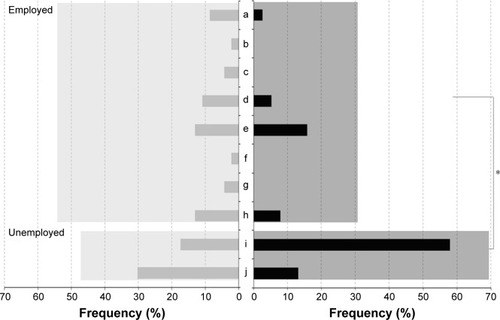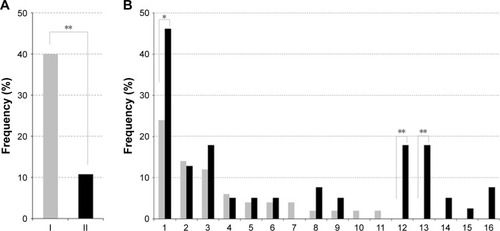Figures & data
Table 1 Demographic and clinical characteristics in the MS and NMS groups (mean ± SD)
Figure 1 Distribution of occupations by skill level in the MS and NMS groups.
Abbreviations: MS, military service; NMS, nonmilitary service; NOS, not otherwise specified.

Figure 2 Comorbid psychiatric disorders in the MS and NMS groups.
Abbreviations: MS, military service; NMS, nonmilitary service; NOS, not otherwise specified.

Table 2 Effects of demographic and clinical factors on the status of MS
